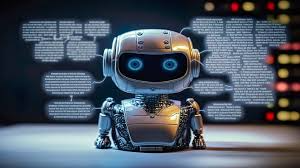Artificial Intelligence (AI) has increasingly become a fixture in the modern workplace, promising efficiency, innovation, and enhanced productivity. However, the integration of AI systems into work environments is not without its drawbacks. These challenges range from job displacement and ethical concerns to issues with data security and reliance on technology. This article explores the key drawbacks of AI in the workplace, highlighting how these challenges impact employees, organizations, and overall work dynamics.
Job Displacement and Unemployment
One of the most significant concerns regarding AI in the workplace is job displacement and unemployment. As AI technologies become more advanced, they are capable of performing tasks traditionally carried out by human employees. Automation of routine and repetitive tasks, such as data entry, customer service, and manufacturing processes, can lead to the reduction of job opportunities in these areas. This displacement can result in increased unemployment rates, especially for workers who lack the skills to transition to new roles. The fear of job loss and the potential for reduced job security can create anxiety and resistance among employees, impacting overall morale and productivity.
Ethical and Bias Issues
AI systems can inadvertently perpetuate ethical and bias issues within the workplace. AI algorithms are often trained on historical data, which may contain biases and prejudices reflective of past human decisions. As a result, AI systems can reinforce existing biases related to race, gender, age, or other factors, leading to unfair treatment or discrimination. For instance, AI-powered recruitment tools may unintentionally favor candidates of a certain demographic if the training data is biased. Addressing these ethical concerns requires careful design, regular audits, and a commitment to ensuring that AI systems operate fairly and equitably.
Loss of Human Touch
The integration of AI in the workplace can lead to a loss of the human touch, which is often crucial for certain roles and interactions. Tasks that involve empathy, creativity, and nuanced understanding, such as customer service, counseling, and management, benefit from human interaction and emotional intelligence. AI systems, despite their advanced capabilities, may struggle to replicate the emotional and relational aspects of human interactions. This loss of personal connection can affect employee satisfaction and customer experience, highlighting the importance of balancing AI automation with human involvement in areas where personal touch is essential.
Data Security and Privacy Concerns
The use of AI in the workplace raises significant data security and privacy concerns. AI systems often rely on vast amounts of data to function effectively, which can include sensitive and confidential information. This reliance on data increases the risk of data breaches and unauthorized access. Additionally, AI systems that handle personal or sensitive information must comply with data protection regulations, such as GDPR or CCPA. Failure to secure data properly or manage privacy concerns can lead to legal repercussions, loss of customer trust, and reputational damage. Ensuring robust data security measures and compliance is crucial for mitigating these risks.
Dependence on Technology
Heavy reliance on AI technology can lead to issues with system reliability and dependence. While AI systems are designed to enhance efficiency, technical malfunctions or failures can disrupt operations and lead to significant downtime. Over-reliance on AI can also result in reduced critical thinking and problem-solving skills among employees, as they may become accustomed to deferring to AI systems for decision-making. Balancing the use of AI with human oversight and maintaining manual processes as backup can help mitigate these risks and ensure business continuity.
Cost of Implementation
Implementing AI technology in the workplace can be costly, involving significant investments in software, hardware, and training. The initial cost of developing or purchasing AI systems, integrating them into existing workflows, and training employees to use them can be substantial. Smaller organizations or those with limited budgets may struggle to afford these investments, potentially leading to a disparity in AI adoption between larger and smaller companies. Additionally, ongoing maintenance and updates to AI systems can incur additional costs, impacting the overall financial viability of AI integration.
Complexity and Maintenance
AI systems can be complex to develop, implement, and maintain, requiring specialized skills and expertise. The complexity of AI technology can lead to challenges in understanding, managing, and troubleshooting these systems. Regular maintenance, updates, and monitoring are necessary to ensure that AI systems function effectively and continue to meet organizational needs. Organizations must invest in skilled personnel or external consultants to manage and maintain AI systems, adding to the operational complexity and cost.
Impact on Employee Morale
The introduction of AI in the workplace can impact employee morale, particularly if it leads to job displacement or significant changes in job roles. Employees may feel threatened by the potential for AI to replace their jobs or change their responsibilities, leading to stress and reduced job satisfaction. Managing the transition to an AI-integrated workplace requires transparent communication, retraining opportunities, and support for affected employees to maintain morale and foster a positive work environment.
Conclusion
While AI offers numerous benefits for enhancing efficiency and productivity in the workplace, it also presents several drawbacks that must be carefully managed. Job displacement, ethical and bias issues, loss of human touch, data security and privacy concerns, dependence on technology, cost of implementation, complexity and maintenance, and impact on employee morale are key challenges associated with AI integration. Addressing these drawbacks requires a balanced approach that considers both the advantages and potential risks of AI, ensuring that technology is implemented thoughtfully and in a way that supports employees and organizational goals.

